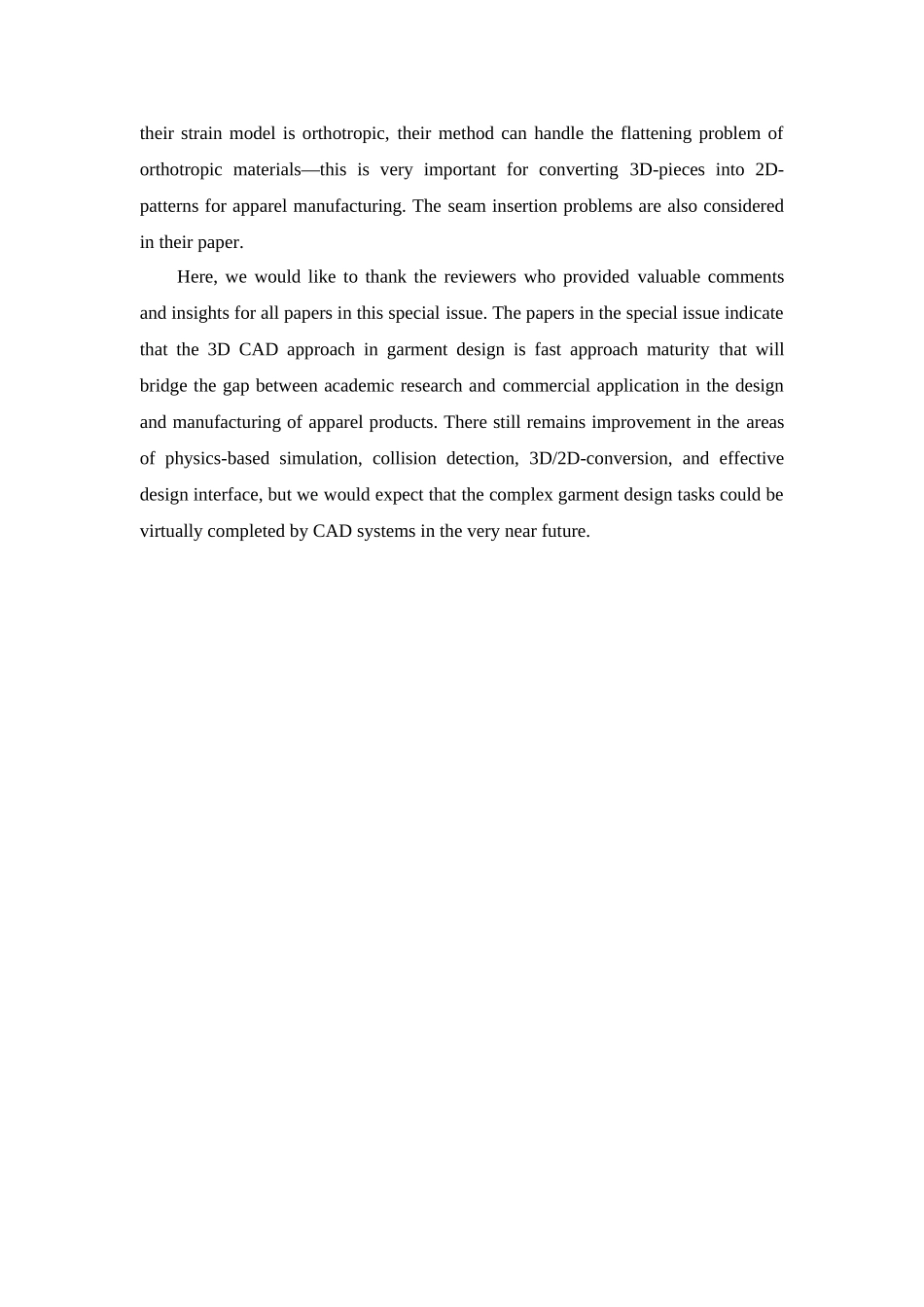CAD methods in garment designThree dimensional Computer-Aided-Design (CAD) technology is gradually diffusing into the garment design and manufacturing applications. At present, the apparel industry widely uses two-dimensional CAD tools. It is anticipated that three-dimensional design tools will be the next evolving technology for the apparel industry. The basic problems in apparel products design are the fitting problem and the related 2D-pattern generation problem. The ultimate goal is to design and produce well-fitted personalized garments for individuals, and the 3D approach is the most rational approach to be adopted to realize this goal. The 3Dapproach consists of several key elements, which include parameterized 3D-mannequin modeling; 3D-garment simulation;3D-pattern design, and 3D/2D-pattern conversion.The aim of this special issue is to provide a forum for researchers to review the past developments, and to identify possible directions for future research on 3D-approaches to garment design. The five papers selected for this special issue provide background and techniques for 3D-applications in the apparel industry. The first paper serves as a cursory review of cloth simulation technology which lays the foundation of 3D-garment design. The following three papers show techniques for 3D-garment design in a virtual environment. The last paper in this special issue gives a novel technique to convert 3D-garment pieces into corresponding two patterns.The first paper is a review paper from Choi and Ko on research problems in cloth simulation. As a fundamental technique for the design and modification of apparel items, the physics-based cloth simulation technique is used to generate realistic cloth motion in real-time....


